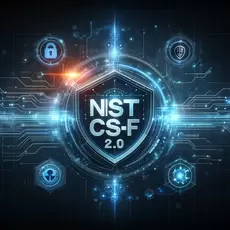
- CSF 1.0: Initially, CSF 1.0 was primarily designed for critical infrastructure sectors such as power plants and hospitals. Its primary aim was to provide a high-level strategic view of the management of cybersecurity risk in sectors that are crucial to national and economic security.
- CSF 2.0: Recognizing the universal challenges of cybersecurity, CSF 2.0 broadens its scope to include all organizations, regardless of their size or industry. This expansion makes the framework applicable to a diverse range of sectors, including information technology, healthcare, finance, and more, acknowledging that cybersecurity is a critical issue for every organization in the digital age.
- CSF 1.0: The initial version focused predominantly on cybersecurity risk management, providing a structured approach to identifying, assessing, and managing cybersecurity risks.
- CSF 2.0: While retaining its emphasis on risk management, CSF 2.0 introduces a new focus on governance. This shift underscores the importance of how organizations establish and implement informed decisions concerning their cybersecurity strategies. It stresses the need for a top-down approach where leadership plays a key role in driving cybersecurity initiatives.
- Both versions of the framework share a core structure consisting of Functions, Categories, Subcategories, and References. This core structure provides a comprehensive and flexible approach to addressing cybersecurity.
- CSF 2.0: This latest version offers increased detail and a more streamlined structure. One significant change is the removal of certain subcategories, integrating them into new locations within the framework. This restructuring aims to simplify and clarify the framework, making it more intuitive and user-friendly.
- CSF 2.0 Reference Tool: One of the hallmark additions in CSF 2.0 is the introduction of a CSF 2.0 Reference Tool. This tool facilitates simpler implementation by allowing users to explore and utilize the core guidance in various formats. It enhances accessibility and practical application of the framework.
- Searchable Catalog of Informative References: CSF 2.0 also provides a searchable catalog of informative references. This feature is particularly beneficial for organizations looking to map their existing practices to the framework. It enables them to leverage their existing efforts and align them with the framework’s guidance, ensuring a more efficient transition and implementation.
In essence, while CSF 1.0 laid the groundwork for cybersecurity risk management, CSF 2.0 takes a significant leap forward. It expands its reach to encompass a wider array of organizations, emphasizes the critical role of governance in cybersecurity, and introduces user-friendly tools for broader adoption. This evolution from CSF 1.0 to CSF 2.0 reflects a deepened understanding of the complexities of cybersecurity and the need for a comprehensive, adaptable, and accessible framework to safeguard organizations in today's digital world.
As we embrace these changes and implement CSF 2.0, we step into a more secure and resilient future, prepared to tackle the ever-evolving cyber threats that face organizations across all sectors.
Author
Dr. Gilberto Crespo is an information security researcher & technology expert. He has been working for more than 24+ years in the information technology industries, cybersecurity, financial, higher education, and life coaching. He is also a motivational and leadership speaker.


